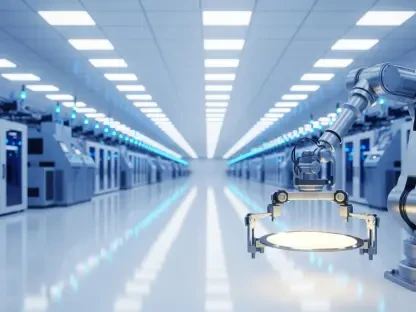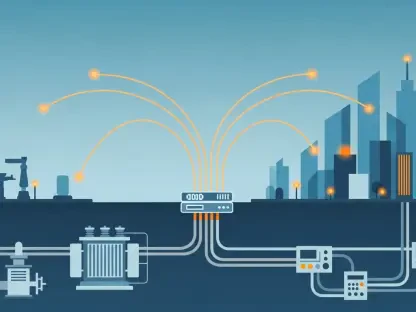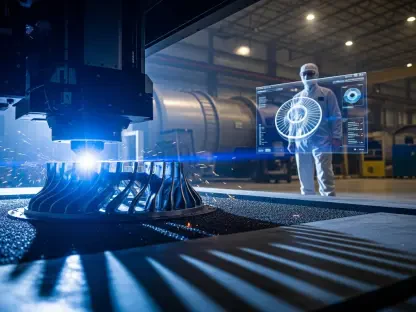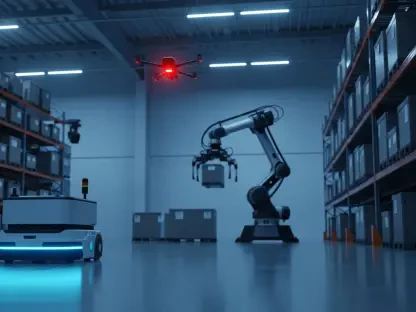Imagine a sprawling industrial plant where every machine, sensor, and control system operates in perfect sync, until a single glitch in the cloud-based infrastructure halts production for hours, costing millions. This scenario is no longer a distant risk but a pressing reality for operational technology (OT) environments transitioning from traditional on-premises systems to cloud solutions. As industries like manufacturing and energy embrace digital transformation, cloud migration offers unparalleled scalability and efficiency, yet it also introduces unique challenges in high-stakes settings where downtime can be catastrophic. This review delves into the intricacies of cloud adoption in OT, examining its technical components, emerging trends, and real-world implications, while highlighting the critical need for strategic planning in this transformative shift.
Understanding Cloud Migration in OT Environments
Cloud migration in OT refers to the process of moving critical industrial systems, such as Supervisory Control and Data Acquisition (SCADA), from on-premises infrastructure to cloud-based platforms. Unlike information technology (IT) environments where disruptions might cause temporary inconvenience, OT systems control physical processes, making reliability paramount. The shift promises benefits like reduced hardware costs and enhanced data accessibility, but it also demands a rethinking of operational workflows in sectors unaccustomed to virtual environments.
The driving forces behind this transition include the need for cost efficiency and the ability to scale operations rapidly in response to market demands. Cloud solutions eliminate the burden of maintaining physical servers and offer flexibility for remote monitoring, which is increasingly vital in a globally connected industrial landscape. However, the stakes are significantly higher in OT, where a system failure could lead to safety hazards or production losses, setting this migration apart from typical IT upgrades.
This movement aligns with the broader trend of digital transformation sweeping through industrial sectors. As companies strive to integrate advanced analytics and real-time decision-making, cloud platforms provide the infrastructure to support these innovations. Yet, the journey is fraught with complexities, requiring a deep understanding of both legacy systems and modern cloud architectures to ensure seamless integration without compromising operational integrity.
Key Components and Challenges of Cloud Adoption
Technical Transition from On-Premises to Cloud
Migrating OT systems to the cloud involves a fundamental overhaul of infrastructure management, shifting from physical servers to virtual environments hosted by cloud providers. This process often includes reconfiguring SCADA systems to operate in distributed setups, ensuring that latency and performance meet the stringent demands of industrial operations. The transition requires meticulous planning to avoid disruptions during the switchover, as even minor delays can cascade into significant operational setbacks.
A critical aspect of this shift is the reliance on cloud providers for infrastructure stability and support. While on-premises systems allow direct control over hardware and maintenance, cloud environments introduce dependencies on external services for uptime and updates. This change can impact performance, especially for time-sensitive OT applications where real-time data processing is non-negotiable, necessitating robust service-level agreements to guarantee reliability.
Beyond infrastructure, the migration also entails adapting software and protocols to cloud-compatible formats. Many legacy OT systems were not designed for virtual environments, requiring updates or replacements that can strain budgets and timelines. This technical complexity underscores the importance of phased implementation, allowing organizations to test and refine their approach before fully committing to a cloud-based model.
Cybersecurity and Shared Responsibility Model
One of the most pressing challenges in cloud adoption for OT is cybersecurity, given the critical nature of industrial systems. The shared responsibility model, where cloud providers secure the underlying infrastructure while organizations manage application-level security, introduces new vulnerabilities. In OT settings, a breach could not only compromise data but also disrupt physical operations, amplifying the need for airtight security measures.
Robust protocols must be established to protect against threats like unauthorized access or data interception, particularly when systems are accessible over public networks. Organizations often lack the in-house expertise to navigate these risks, highlighting the importance of collaboration with providers to define clear security boundaries. Without proper governance, the potential for oversight gaps increases, leaving critical systems exposed to exploitation.
Moreover, the high-stakes environment of OT demands continuous monitoring and rapid response capabilities to address incidents before they escalate. Unlike IT, where patches can be applied with minimal urgency, OT systems may require immediate action to prevent cascading failures. This reality places additional pressure on organizations to invest in advanced threat detection and incident management tools tailored to cloud architectures.
Emerging Trends in OT Cloud Migration
The landscape of cloud migration in OT is evolving rapidly, with the rise of cloud-native professionals who bring specialized skills to industrial settings. These experts are instrumental in designing systems that leverage the full potential of cloud technology, from predictive maintenance to real-time analytics. Their growing presence signals a shift toward more integrated and innovative approaches to OT management.
Vendor offerings are also adapting to meet the unique needs of OT environments, with providers rolling out specialized solutions for industrial applications. Features like enhanced redundancy and edge computing capabilities are becoming standard, addressing concerns about downtime and latency. This trend reflects a broader industry recognition that OT cloud adoption requires tailored tools rather than one-size-fits-all IT solutions.
Looking ahead, industry forecasts suggest that cloud services will dominate OT infrastructure within the next 5 to 10 years, driven by cost pressures and technological advancements. Emphasis on resilience planning is growing, with organizations prioritizing failover mechanisms to mitigate risks. This forward-thinking approach is shaping a future where cloud systems are not just an option but a cornerstone of industrial operations.
Real-World Applications and Case Studies
Across industries like manufacturing and energy, cloud migration in OT has yielded both remarkable successes and cautionary tales. In one instance, a major energy provider seamlessly transitioned its monitoring systems to the cloud, achieving significant cost savings and improved remote access for field teams. This success hinged on thorough preparation and collaboration with the cloud provider to ensure uninterrupted service during the migration.
Conversely, missteps highlight the perils of inadequate planning. A manufacturing firm encountered a 90-minute outage during its cloud transition due to unclear responsibilities between internal teams and the provider, resulting in substantial financial losses. This incident underscores the necessity of defining roles and contingency plans well in advance to prevent operational hiccups.
These examples illustrate that while the potential benefits of cloud adoption in OT are substantial, execution is everything. Organizations that invest in detailed roadmaps and cross-functional coordination tend to fare better than those that rush the process. Real-world outcomes serve as valuable lessons for others embarking on similar journeys, emphasizing the importance of learning from both triumphs and setbacks.
Barriers to Successful Cloud Migration
Despite its promise, cloud migration in OT faces significant hurdles, including hidden costs that can derail budgets. Uncertainties around redundancy and downtime protocols often lead to unexpected expenses, as organizations grapple with ensuring backup systems are as robust as their on-premises predecessors. These financial surprises can strain resources, especially for smaller firms with limited capital.
Cultural barriers also pose a formidable challenge, as OT personnel accustomed to physical infrastructure often struggle to align with cloud architects who operate in virtual domains. This divide can result in communication breakdowns and inefficiencies, slowing down the adoption process. Bridging this gap requires dedicated efforts to foster mutual understanding and trust across teams.
Additionally, a shortage of experts who can navigate both OT and cloud technologies exacerbates these issues. While training programs and leadership initiatives are emerging to address this gap, progress is slow. Until a critical mass of skilled professionals is available, many organizations will face delays in realizing the full benefits of cloud systems, highlighting the need for strategic investments in talent development.
Future Outlook for Cloud in OT
The trajectory of cloud migration in OT points toward widespread adoption, with technological advancements likely to address current limitations over time. Innovations such as edge-cloud hybrid models could offer solutions for latency concerns, enabling real-time processing closer to operational sites. These developments promise to make cloud systems more viable for even the most demanding industrial applications.
Change management practices are also expected to evolve, with greater emphasis on cross-functional training and leadership strategies to unify disparate teams. Industry collaboration may play a pivotal role, as shared standards and best practices emerge to guide organizations through the transition. Such collective efforts could accelerate the learning curve and reduce the risk of costly errors.
Ultimately, the long-term impact of cloud dominance in OT will likely center on enhanced operational efficiency and resilience. As organizations refine their approaches, the ability to leverage data for predictive insights and streamlined processes will transform industrial landscapes. This future hinges on proactive adaptation, ensuring that technology and organizational dynamics evolve in tandem to meet emerging challenges.
Final Thoughts
Reflecting on this exploration of cloud migration in operational technology, it becomes evident that the journey demands far more than technical upgrades—it requires a fundamental shift in organizational mindset. The analysis reveals how critical preparation and cybersecurity prove to be in preventing catastrophic failures. Real-world cases demonstrate both the rewards of meticulous planning and the pitfalls of oversight.
Moving forward, organizations should prioritize building robust change management frameworks to navigate this complex transition. Investing in training to bridge the gap between OT and cloud expertise emerges as a vital step, alongside establishing clear accountability with providers. As the industrial sector continues to evolve, taking deliberate steps to anticipate failure scenarios and define success metrics will be essential for harnessing the full potential of cloud technology in OT environments.









